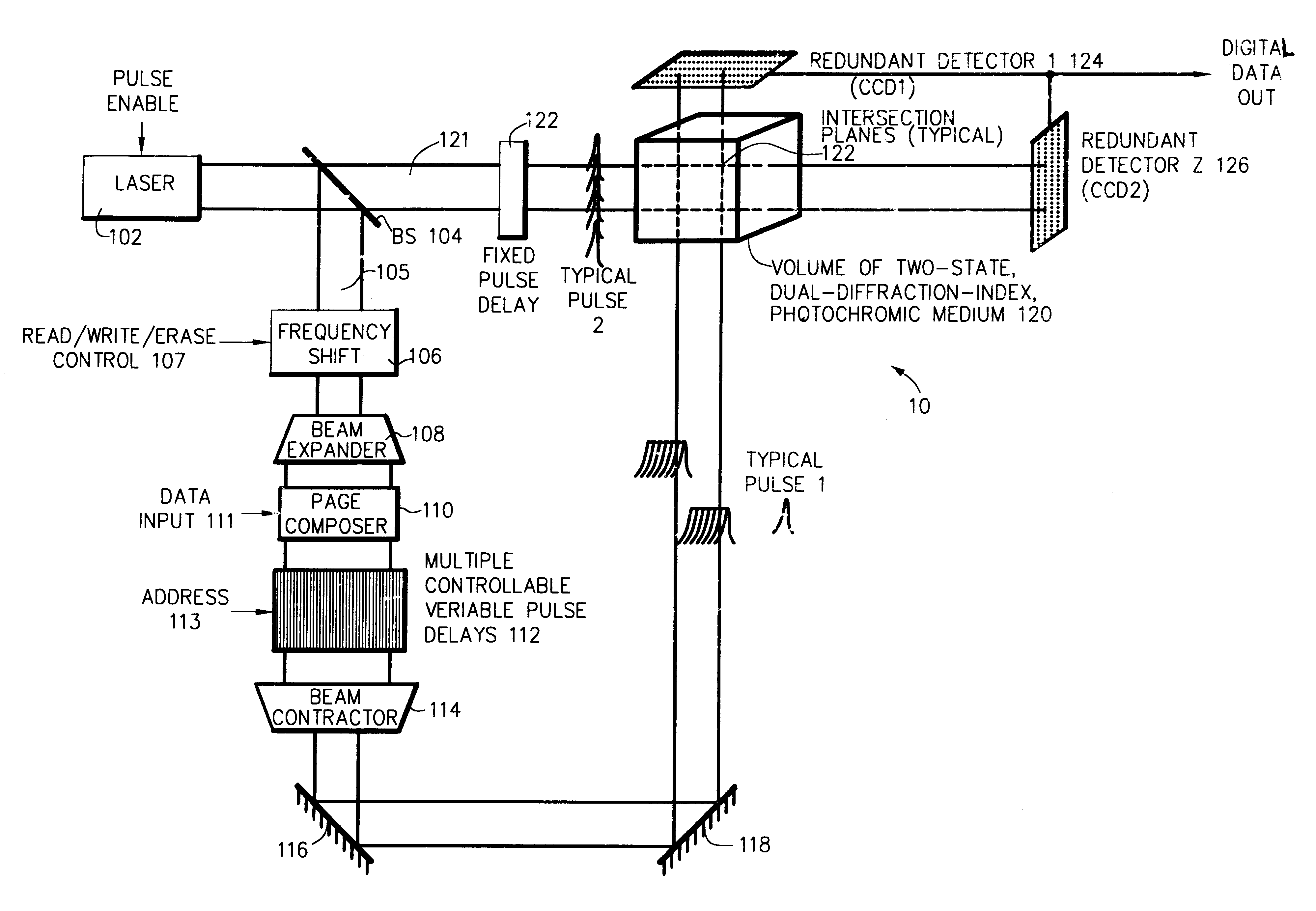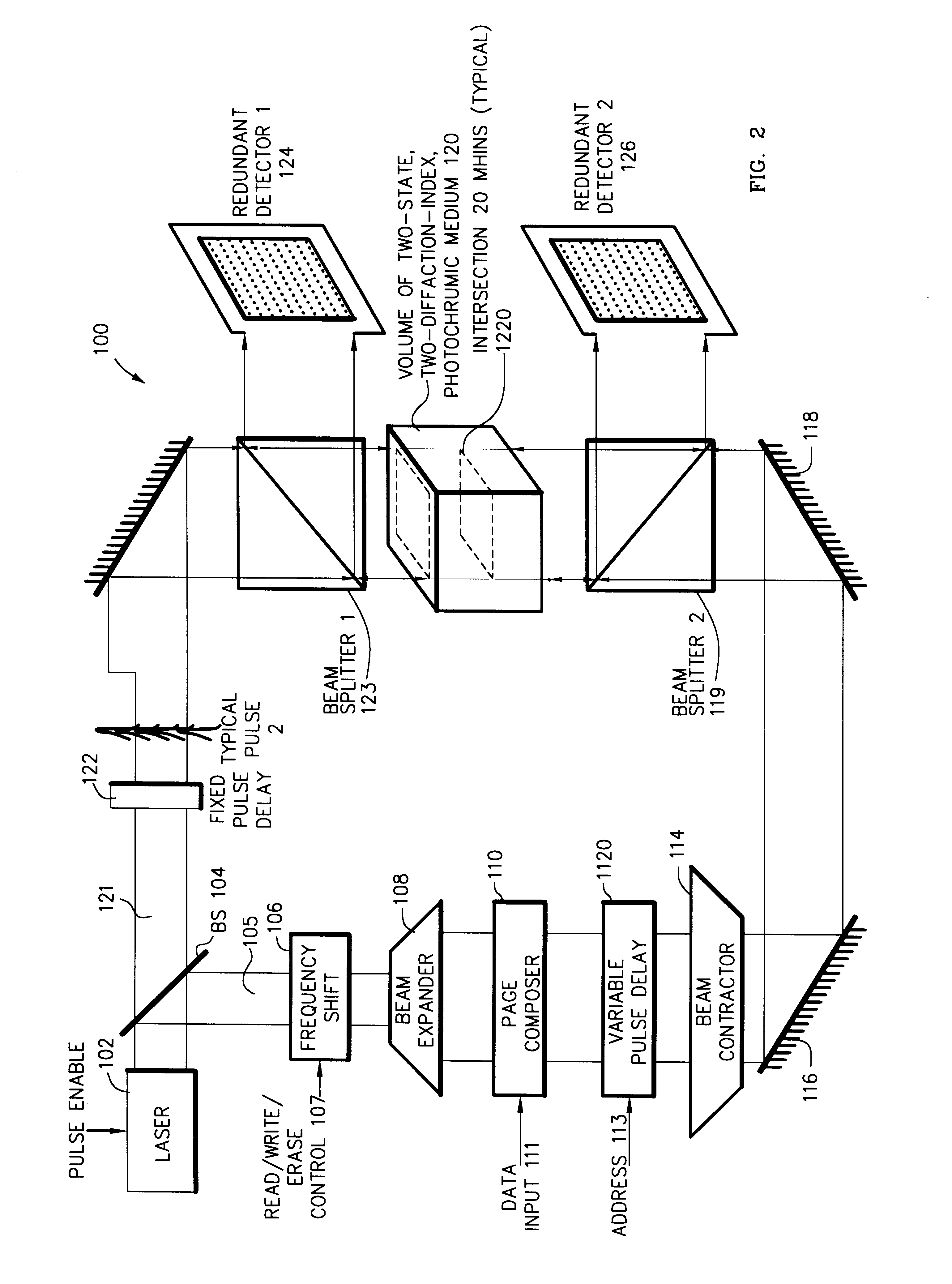Two-photon four-dimensional optical memory
- Summary
- Abstract
- Description
- Claims
- Application Information
AI Technical Summary
Benefits of technology
Problems solved by technology
Method used
Image
Examples
Embodiment Construction
A schematic first embodiment 10 of a 2-P 4-d radiation memory in accordance with the present invention is shown in FIG. 1. A LASER 102 produces a radiation pulse of an appropriate energy. The LASER 102 may typically be a Nd:Yag diode pumped solid state laser. The light radiation pulse is split in a beam splitter BS 104 for distribution along each of two paths.
One of the two light pulses 105 optionally undergoes a frequency shift in FREQUENCY SHIFT 106 in response to READ / WRITE / ERASE CONTROL 107 in accordance whether the current operation is reading, writing or erasing. The FREQUENCY SHIFT 106 may be typically either an electro-optic or acousto-optic device.
Typically the same light pulse 105 that is shifted is also spatially encoded in its two-dimensional wavefront in the PAGE COMPOSER 110. The PAGE COMPOSER 110 may be, as is taught within the related companion patent applications, an array of spatial light modulators. Such a spatial light modulator, or SLM, should desirably perform ...
PUM
 Login to View More
Login to View More Abstract
Description
Claims
Application Information
 Login to View More
Login to View More - R&D
- Intellectual Property
- Life Sciences
- Materials
- Tech Scout
- Unparalleled Data Quality
- Higher Quality Content
- 60% Fewer Hallucinations
Browse by: Latest US Patents, China's latest patents, Technical Efficacy Thesaurus, Application Domain, Technology Topic, Popular Technical Reports.
© 2025 PatSnap. All rights reserved.Legal|Privacy policy|Modern Slavery Act Transparency Statement|Sitemap|About US| Contact US: help@patsnap.com



